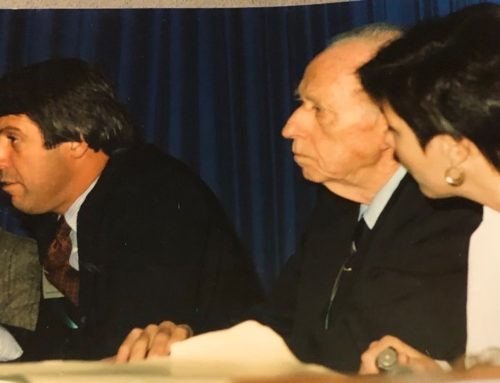by David Bork
Every sports team has a bench. Basketball, baseball, football (aka: soccer) there are players waiting for the opportunity to step into the game and play their hearts out. There is the “first string,“ the ones who start the game and then comes the “second string.“ My friend, Mike Goerne, has been the head lacrosse coach in Aspen for the past 7 years. He predicts that the team next year will be the best ever. “I started with this group when they were still in grade school, taught them the fundamentals which we have been refining ever since. If ever there was a group ready to win the state championship, they are the ones!“
Mike has spent his years as a coach, building the skills of each player. Simultaneously he has been building character in these young players. I think that Mike is an elegant young man with admirable qualities — integrity, loyalty, courage, self-respect, honest, intelligent and more. He tells me that he is building men, and the sport is his vehicle for doing this.
A couple of years ago one of his star players moved to another state. That left a gap on his team. There was not a back up player on the bench who could step into that star player’s slot. It took Mike two full seasons before he had filled all the gaps on his team bench.
In family business it is imperative to build a bench. You must have “players in training,“ just like the lacrosse team described. A simple exercise to find your “gaps“ is found in the following matrices of read family businesses.
Case 1
This is a vigorous business with annual turnover of $320 mm USD. First generation is no longer active in the business. 2nd Generation took over a smaller business as COO, Chief Operating Officer, at age 30, with 1st Gen as Chairman standing by as his coach. It was the 2nd Generation. COO who built the business into what it is today, using the foundation he inherited. 2nd Generatopm, now President and CEO is planning to work about ten more years, which will make him 64 years of age and his children 33, 30, and 27. In the past 5 years this company has had an average annual growth rate of 13.7%. Thus, it is reasonable to predict that if this rate holds generally constant, in 2022 the annual turnover will exceed $ 1 B USD.
Now, in planning we must ask the critical question: “What kind of leadership will a company with more than $ 1B need in 2022?“ We can reasonably predict that the business will be complex. It is likely that a mature, experienced leader will be best. That person will have 25 — 30 years in the business and will probably have lead one or more smaller companies to greatness. That leader will likely be between age 45 — 55. It is unlikely that a person in their early 30s will be qualified for the position. This means that 3rd Generation family members will not be in a position to succeed the 2nd Generation leader. The “Gap on the Bench“ in this family will come in or about the year 2018 — 2025.
Age in 2012 Age in 2022 Age in 2032 Age in 2042 Age in 2052 1st Generation 81 91 101 110 121 2nd Generation 54 64 74 84 94 3rd Generation 23, 20, 17 33, 30, 27 43, 40, 37 53, 50, 47 63, 60, 57
What to do?
First step is in the family. Discuss this “Gap on the Bench“ with family members. Be certain that everyone understands the consequences of the Gap. All must recognize that there is a difference between being a responsible owner and a competent executive/operator. Given the information generated in this simple matrix, it becomes apparent that family members must focus on being an effective, responsible owner.
In the meantime, 2nd Generation leader must look outside of the family to build depth on his “Bench.“ It is not possible to grow the 3rd Generation any faster than one year at a time. In this short article it is not possible to spell out the 2nd Generation tasks but let it suffice to say that he has a big job to build a comprehensive team that will lead the billion dollar company they expect to become.
Case 2
This case is hypothetical but the underlying principles of staying too long and failing to project future leadership needs into the future are important. Most significantly, the founder never really transferred control to the 2nd Generation. He had an inclination to second-guess all decisions and to “meddle.“ This meant that the leadership in the company was constantly at risk of becoming polarized and/or politicized — torn between what the Founder had to say, and his 2nd Generation successor. If one considers the evolving age of 2nd Generation, they should have come into their leadership positions between ages 55 — 60, at least, but that was not to be. The founder was still “in charge,“ regardless of what the organizational chart might have said.
This founder has much in common with Steve Jobs, founder of Apple. When Jobs was first diagnosed with cancer, instead of following the aggressive advice of his diagnosing physicians, he used his entrepreneurial management skills to take charge of his treatment. He first tried alternative medicine, including changing his diet and other “natural“ cancer treatments. It is likely that had Jobs followed the advice first given, he would still be alive. This is a problem with many decisive entrepreneurs: they think they know everything and that THEIR WAY of approaching all matters is correct. In Case 2 can speculate that the Founder probably set the stage for staying too long in the top position, hanging around and meddling. This practice undermines building strong leaders who, with focus and direction, can move the corporation forward. Failure to have a clear transfer creates confusion within the corporate culture. Had this founder made a matrix and projected into the future, he might have stepped aside sooner.
2012 2022 2032 2042 2052 1st Generation Founder Deceased 2002 at age 93, while Founder still influencing the business 2nd Generation 83, 81, 72 93, 91, 82 103, 101, 92 113, 111, 102 123,121, 112 3rd Generation 52, 50, 47, 27 62, 60, 57, 37 72, 70, 57, 47 82, 80, 67, 57 92, 90, 77, 67 4th Generation 13, 10, 6, 2 23, 20, 16, 12 33, 30, 26, 22 2 43,40,36, 32 53, 50, 46, 42
Taking the LONG VIEW
As a reader, you may be wondering about the longevity of these examples. More than one business leader has said to me, “Now, IF I die… I normally correct them and suggest, “No, WHEN you die… You see, most business leaders don’t even give the latter possibility any consideration. The fact is, we all die eventually. Thus, in planning for the filling the Gaps on your Business Bench, it is very helpful to create a matrix and fill in the blanks. Here is a sample to help you get started:
2012 2017 2022 Current Realities Projected Challenges Financial Picture Product Development
While you are taking the LONG VIEW, also take a careful look at your family business bench. Ask yourself these questions:
- What will my business become in the next ten years?
- What am I doing today to build a strong bench of leaders for this business?
- Am I planning with clarity and realism or is emotion driving my thinking?
- Am I realistic in assessing the competence of family members?
- Have I adequately funded my retirement?
- Do I have enough hobbies and interests so when I do leave the business, I won’t come back to meddle?
- I love my business but who am I as a person?
My parting advice: Find YOUR Gap and fill it!
Does Your Family Business Need Help?
Family Business Matters has extensive experience assisting family businesses. With many decades of experience, we understand the wide variety of challenges that families face as they work together to build, grow and sustain a thriving family business generation after generation. Through conferences, continuing education programs, family business retreats, speaking engagements and private family business consulting services, Family Business Matters has assisted more than 450 family-owned businesses around the world chart their way through family business issues of all shapes and sizes.
Contact Us
For more information on how Family Business Matters can help your family business survive and thrive, please contact us today at (970) 948-5077.






